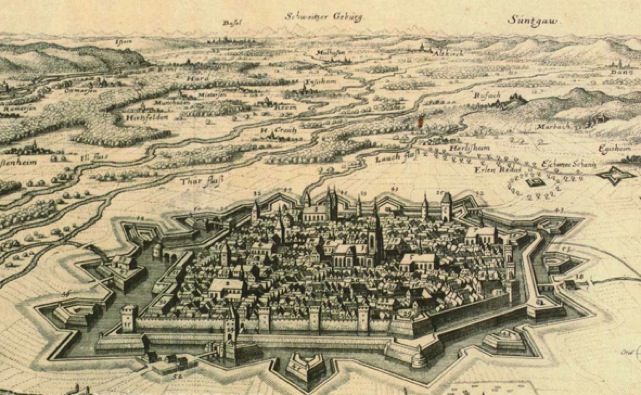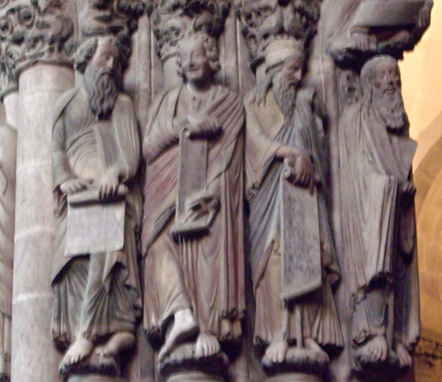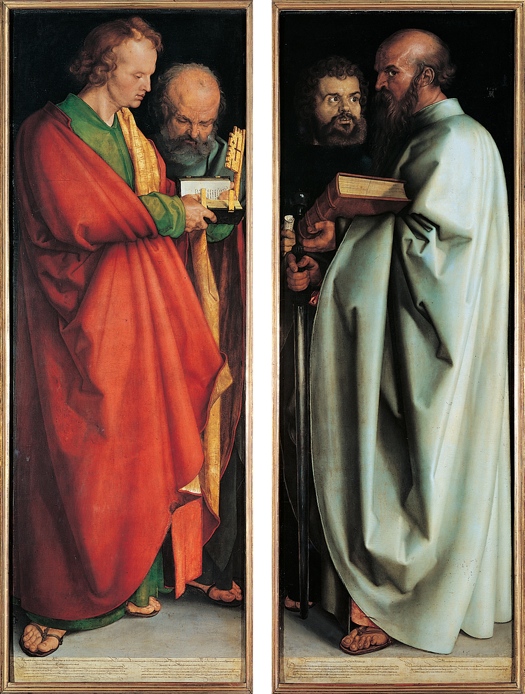

The Four Elements,
The doctrine of the four humours as related to the primal elements emerged from the Hellenistic interpretations of the Greek writers from the Ancient world of Ionia and Athens before the common era [BCE]. These ideas were in contrast to five phases in Chinese thought.
Rational thinking in Western civilization was to become dominated by Aristotle's four causes.
Greco-Roman & Byzantine ideas persisted for a thousand or more years.
Four directions on the Earth's surface.
The Renaissance & Reformation began to change knowledge.

The four evangelists of the New Testament are John, Matthew, Mark, & Luke.
There were four seasons, four horseman, four directions, and four humours.
"The medical basis for the characterization was the ancient and persistent doctrine of the four humours –sanguine, phlegmatic, choleric, and melancholic – which were locked into the universal four-fold scheme of the elements, times of day, winds, and ages of man." writes Martin Kemp.
Visualizations, 2000, p. 15.
"Sir Francis Bacon satirized the schematic of four in the very serious critique of the medieval concepts in his essay on the Four Idols.
The doctrine of the Four Elements
Humans were made of earth, air, water and fire.
Four elements:
Each of these elements exhibited a correspondence of humans with the cosmos.
macro & microcosm of the four humors, stages of life & temperament
earth – flesh, black bile, later middle age, melancholia
air – breathing, yellow gall/bile, maturity, choleric, jaundice
fire – blood, sanguine, youth, fever
water – phlegm mucous, old age, phlegmatic
Art was to embody this concept of the four humours in a very symbolic expression in a painting by Albrecht Dürer, of Nuremberg, Germany.

Albrecht Dürer
The Four Apostles, 1524-1526.
John, Peter, Mark, Paul
The painting represents the implications of the Reformation by reordering and replacing two of the four evangelists with writers to whom the Protestants turned for divine inspiration: John and Paul.
Reformation, and the emergence of challenges to Galenic medicine, from direct observations.
Such as from those of Andreas Vesalius.
Lutheranism, and the justification by faith alone, as springs from careful Biblical study.
Yet, each apostle actually portrays the temperament based on symptoms arising from an imbalance of the humours with each excessive humour ascribed to a different figure in Dürer's painting.
Evangelist temperament personality (physiology & psychology)
John is a sanguine spirit filled with evangelical fire
Peter is a phlegmatic senior prophet, experienced
Mark is the choleric, bile filled preacher
Paul is a melancholy, crazed 'genius'
sources:
Martin Kemp, Visualizations: The Nature Book of Art and Science. Berkeley: University of California Press, 2000. pp. 14-15.